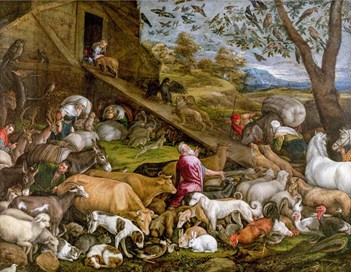THIS is an excellent book. It discusses how the story of Noah and the flood has been interpreted over the past two thousand years, not only in Christianity, but also in Judaism and Islam. Its author, Philip Almond, Emeritus Professor of Religion at Queensland University, covers a vast amount of material and writes in an engaging manner. Nineteen plates (mostly in colour) add to the attractions of this volume.
In first-century Judaism, Philo unusually allegorised the story, seeing the flood as a flood of passion which the soul undergoes, while Josephus anticipated modern scholarship in equating Noah with the Babylonian flood hero (known from Berossus) and saw Noah as a preacher of repentance. In Islam, Noah is a prophet, appearing frequently in the Qur’an, and likewise calls people to repentance to no avail. (In Genesis, Noah is curiously silent; contrast 2 Peter 2.5.)
Some church Fathers, such as Augustine, allegorised the story, most notably seeing the ark as a symbol of the Church, a place of salvation. The Reformers put an end to this allegorising and emphasised the literal sense. With growing knowledge of the world, however, it became increasingly difficult to take the story literally. How could pairs of all the world’s animals be fitted into the ark? How did creatures unique to the Americas and Australia find their way to the ark? Where did all the water sufficient to cover the earth’s highest mountains come from?
So, with the coming of the Enlightenment, some scholars started wondering whether a universal flood such as Genesis depicts was possible. The 17th-century French Calvinist Isaac La Peyrère thought that the flood had been confined to Palestine. Those still maintaining a universal flood came up with increasingly implausible explanations. For example, William Whiston, best known today for his translation of Josephus, proposed that the earth had been hit by the tail of a comet, shedding water all over the earth.
 AlamyThe Animals entering Noah’s Ark (c.1570) by Jacopo Bassano (1510-92) is one of the plates in Noah and the Flood in Western Thought
AlamyThe Animals entering Noah’s Ark (c.1570) by Jacopo Bassano (1510-92) is one of the plates in Noah and the Flood in Western Thought
The modern era brought the rise of biblical criticism and the recognition that Genesis contains two flood stories conflated like a jigsaw, and that the Genesis flood story is based on the Mesopotamian flood story, the best-known version being that found in the Gilgamesh epic. There is no evidence for a universal flood in historical times and most probably a localised flood in Mesopotamia ultimately lies behind our biblical story. At the same time, defying modern geology, diehard fundamentalists have tried to claim that fossils were the remnants of creatures from Noah’s flood, and adventurers have gone searching for remains of Noah’s ark on Mount Ararat (Arkeology!).
Finally, on the last page of his book, Almond maintains that the story of Noah’s flood is highly relevant for our own age beset by climate change. Just as human wrongdoing brought on the flood, so human wrongdoing in our own time threatens environmental catastrophe.
There is so much more to this wonderful book than I can mention here. I also have a number of minor criticisms which there is no space to discuss.
Professor John Day is Emeritus Professor of Old Testament in the University of Oxford, and Emeritus Fellow and Tutor of Lady Margaret Hall, Oxford.
Noah and the Flood in Western Thought
Philip C. Almond
Cambridge University Press £35
(978-1-009-55722-1)
Church Times Bookshop £31.50
















